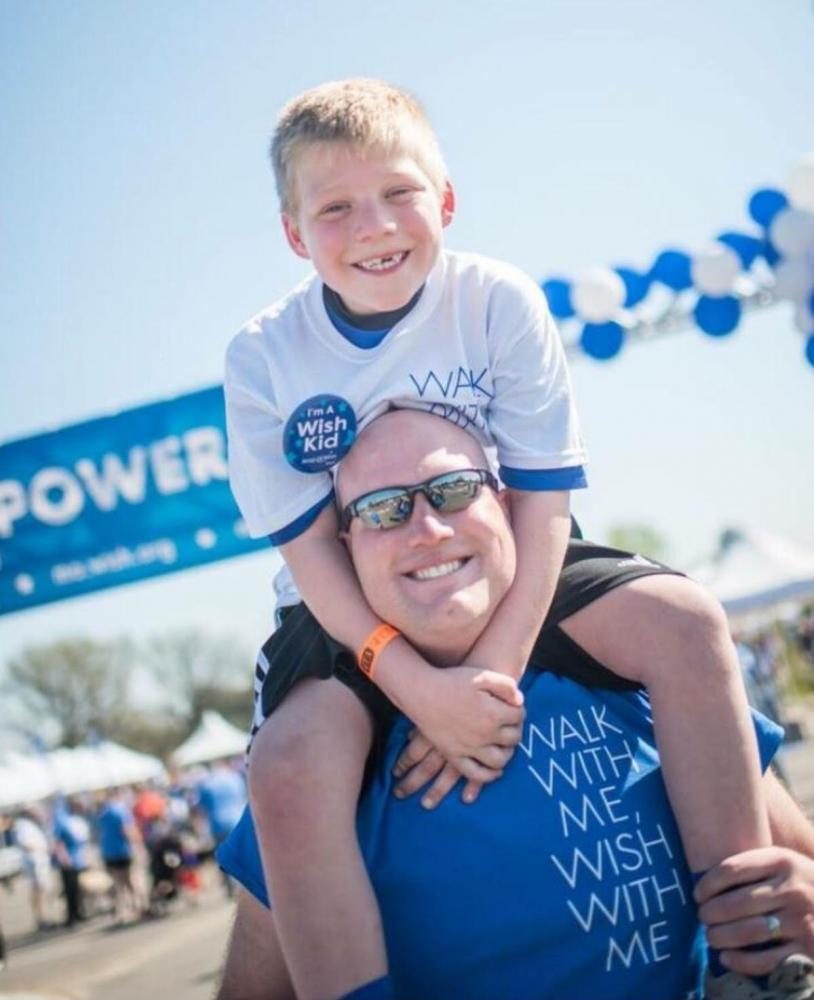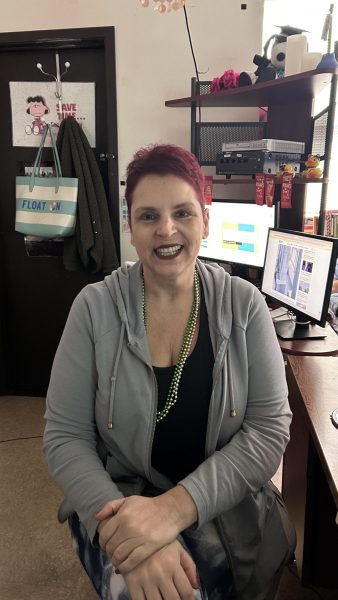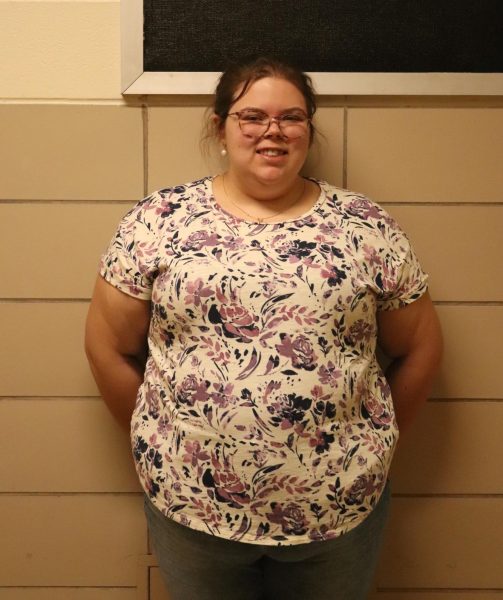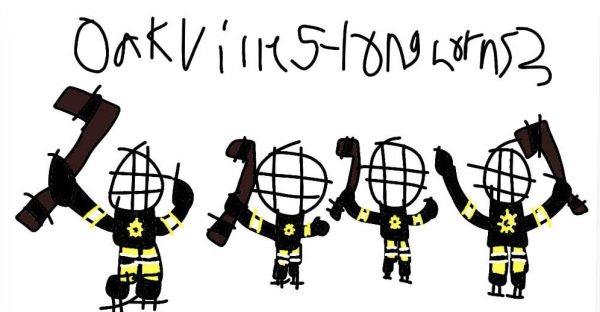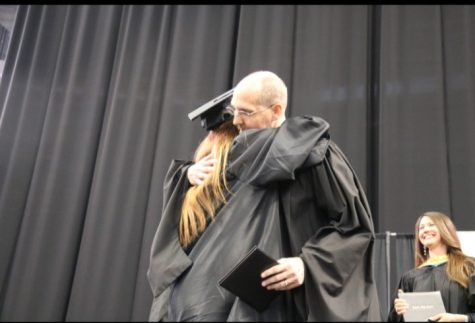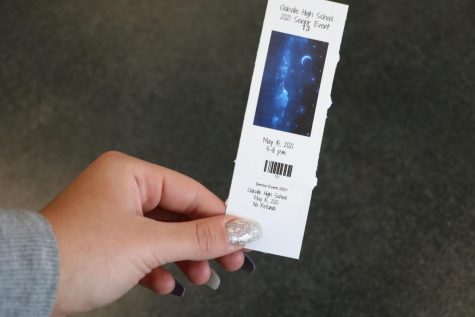Children’s Heart Foundation awareness
Picture courtesy of Lindsey Wiedermann
AJ Wiedermann smiles on his father’s shoulders.
At about eighteen weeks into her pregnancy, Lindsay and Brian Wiedermann received scary news. After a false diagnosis of a neural tube defect, the couple had learned that their fourth child, Adam J. Wiedermann (AJ), had Congenital Heart Disease (CHD).
“Everybody goes into that twenty week ultrasound looking for, ‘Is it a boy, is it a girl?’ and really they should be praying that the baby’s healthy,” Lindsay said.
CHD is considered a “blanket term” to cover a variety of heart defects according to Lindsay. This disease mostly affects the heart, but as in AJ’s case, it can also affect the lungs.
A typical fetus has a natural hole in the heart called the atrial septal defect (ASD) that takes blood from the heart and transfers it to the lungs. When the child is born, the hole naturally closes up after it stops getting hormones from the mother, and the pulmonary valve takes over. In AJ’s case, the doctors had cut that hole open, and AJ was the first baby in the United States to have a stint placed in his ASD. AJ’s body was not used to this, as the heart repeatedly tried to fix the problem on its own, forcing doctors to do multiple cardiac capillary surgeries to keep the ASD open and the heart working in a healthy manner.
To stitch the hole closed, the doctors performed two, very serious open-heart surgeries, taking place when AJ was five months old and then last May, when he was in third grade.
While most third graders worry about friends, homework, and sports, AJ has much more to consider, such as when he would have another cardiac capillary surgery; he’s already conquered around a dozen. “I couldn’t even tell you (how many surgeries he’s had),” Lindsay said.
There’s no doubt that AJ is a fighter. “The kid never likes to complain,” Lindsay said. “He doesn’t come to us when things are wrong… in the hospital, he never wanted to complain that he was in pain until he couldn’t help it anymore… he would start screaming because he was in so much pain. He would let it go on too long without asking for medicine.”
Despite the pain, AJ and his friends and family have had many pleasurable experiences. For example, AJ has been the captain of a Disney cruise through Make-A-Wish. Two individual Make-A-Wish facilitators chose to grant AJ’s wish, and as the facilitators became close with the family, they decided to attend a surprise party for AJ. “That was very overwhelming to have them there,” Lindsay said.
The party was held on May 15, the night before his second heart surgery. Close family friends presented him with posters to decorate his hospital room. When AJ woke from surgery the next day, he was greeted by familiar faces of superheroes and Despicable Me minions, AJ’s favorite characters.
These occasions have shown the family the general “sweetness of people” according to Lindsay. During his most recent hospital stay, Lindsay bought AJ a “bummer bear,” a bear designed for hospital patients and advertised to “feel your pain.” When someone else had graciously purchased one for AJ as well, he decided to take the second bear to the hospital with him. Reflecting the kindness that had been shown to him he gifted the other bear to a boy down the hall who had just undergone heart surgery.
AJ has always had a lighthearted, fun attitude. Inspired by John Kertzborn’s (from FOX 2 News) famous “Bow Tie Tuesday” tradition, AJ showed up to kindergarten wearing a bow tie every Tuesday. He continued the trend each week through second grade and sporadically this year, even after surgery. When the trend was met by fellow student apprehension, AJ’s then principal Mr. Dan Gieseler partnered with AJ to combat the bullying one bow tie at a time.
AJ has influenced many people with his perseverance and positivity- so much so that his seventh grade sister, Naomi, strives to be a cardiothoracic surgeon, specializing in pediatric care so she can help many children in similar situations to AJ’s. “I tell her all the time that maybe because of AJ’s struggle, it has encouraged her to go into this for her life’s work,” Lindsay said. “God knows how many children she could save because of what she witnessed with her brother. Every little thing happens for a reason.”
Although the journey has been long, it’s taught the Wiedermanns how to appreciate the little things in life and has unified the family. “(This journey) brought me closer to God and brought my family closer together,” Lindsay said. “It’s made us better than worse. That’s just the way I choose to look at it…”
Brian and Lindsay have agreed to share their story in attempt to raise awareness for CHD. Here are some facts about this defect from the Center for Disease Control and Prevention:
CHDs affect nearly 1% of―or about 40,000―births per year in the United States.
About 25% of babies with a CHD have a critical CHD. Infants with critical CHDs generally need surgery or other procedures in their first year of life.
CHDs are a leading cause of birth defect-associated infant illness and death.
During 1999–2006, there were 41,494 deaths related to CHDs in the United States. This means that CHDs were either the main cause of death or contributed to death in some way. During this time period, CHDs were listed as the main cause of death for 27,960 people. Nearly half (48%) of the deaths due to CHDs occurred during infancy (younger than 1 year of age).
In the United States, hospital costs for the population of individuals with CHDs in 2004 were about $1.4 billion. Care for individuals with severe CHDs accounted for about $511 million, or about 37%, of the hospital costs associated with CHDs. If we updated these estimates to 2011 dollars, these costs for the population of individuals with CHDs total $1.9 billion. CDC researchers are working on updating these costs estimates with current data.
In 2005, for a privately insured population in the Unites States, the estimated medical care costs for an average infant with any CHD was about $23,000, and costs were higher for infants with a severe CHD.
——————————————————————————————————————————–
According to the American Heart Association, “twice as many children in the USA die from congenital heart defects each year than from all forms of childhood cancer combined, yet funding for pediatric cancer research is five times higher than funding for CHD.”
If you would like to make a donation to the Children’s Heart Foundation, please click the link to be directed to its donation site: http://chfn.org/donate-now/

Hello, my name is Jaime Meier and I am the Profiles editor of the Prowl. This is my second year in the OHS Journalism program. While this is my first year...


